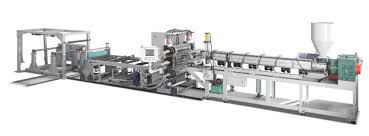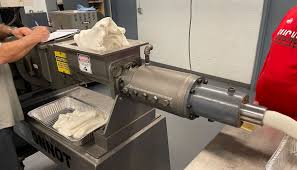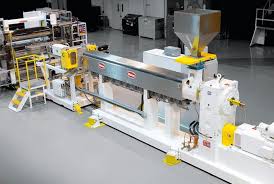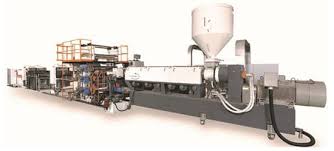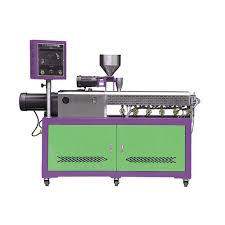In the plastics and food processing industries, the twin extruder stands out as a powerful and versatile machine. Designed for high-intensity mixing, shearing, and shaping, twin extruders are widely used for compounding plastics, producing masterbatches, recycling polymers, and even processing food products like snacks and plant-based proteins.
Whether you’re working in industrial plastics or food tech, a twin extruder provides the control, flexibility, and consistency required for modern, high-efficiency production.
What Is a Twin Extruder?
A twin extruder features two intermeshing screws that rotate either in the same direction (co-rotating) or in opposite directions (counter-rotating) inside a heated barrel. Unlike single-screw extruders, twin-screw systems provide superior mixing and material transport, especially when dealing with formulations that include multiple ingredients like fillers, colorants, or additives.
Types of Twin Extruders
Co-Rotating Twin Extruder: Ideal for compounding, masterbatch production, and recycling. Offers excellent distributive and dispersive mixing.
Counter-Rotating Twin Extruder: Commonly used for PVC pipe and profile extrusion. Ensures high pressure and stable throughput.
Intermeshing vs. Non-Intermeshing: Intermeshing types provide more intensive mixing; non-intermeshing designs are used for specialty applications.
Key Applications
Plastic Compounding: Blending base polymers with additives, stabilizers, or colorants.
Masterbatch Production: Creating concentrated additive blends in a carrier resin.
Polymer Recycling: Processing post-consumer or industrial waste plastic into reusable pellets.
Food Processing: Used in the production of extruded snacks, cereals, and meat alternatives.
Pharmaceuticals and Nutraceuticals: For creating controlled-release drug formulations or dietary supplements.
Main Features and Benefits
High Mixing Efficiency: Twin-screw design allows for intense shear and uniform mixing.
Process Flexibility: Handles a wide variety of feedstocks—powders, granules, liquids, and pastes.
Scalable Output: Available in both lab-scale and industrial production models.
Precise Process Control: Equipped with temperature zones, torque sensors, and PLC controls for optimal processing.
Quick Recipe Changeover: Modular screw design allows for fast customization and minimal downtime.
Choosing the Right Twin Extruder
When selecting a twin extruder for your operation, consider the following:
Material Type: Ensure compatibility with your specific polymer or ingredient mix.
Output Capacity: Match machine specifications with your production volume needs.
Screw Configuration: Choose appropriate screw elements for conveying, mixing, or venting.
Automation Level: Advanced controls and data logging can enhance product consistency and traceability.
Maintenance and Support: Opt for machines with easy-access parts and reliable after-sales service.


